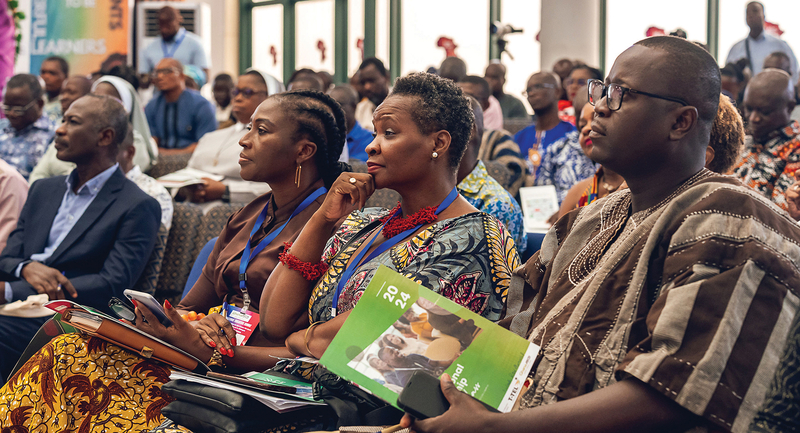As education leaders, we must recognize that bias encompasses more than just our responses to race and socioeconomic status. It also includes subtle but significant flaws in the ways we think. These unconscious cognitive biases quietly, yet profoundly, shape how we think, teach, and lead. As professor Steven Mintz (2021) writes, “Cognitive bias may not be as obviously pernicious as prejudice and bigotry, but it, nevertheless, has many deleterious consequences.”
Cognitive biases directly affect education systems and leadership practices, almost indiscernibly guiding how educators approach their roles and responsibilities. These biases can narrow our perspectives and restrict the opportunities we provide for students, reinforcing inequities and hurting school culture and student outcomes. They can lead us to favor certain teaching methods or leadership styles, making decisions based on instinct and habit rather than evidence.
These biases also operate below the level of conscious awareness, making it difficult for us to recognize them (Ludolph & Schulz, 2017). This lack of awareness can lead us to categorize bias positively as intuition (Mintz, 2021) or even a mental shortcut—such as when a school leader relies on a “gut feeling” when hiring a candidate rather than conducting an objective evaluation of the candidate’s qualifications and alignment with the needs of the school. Further complicating things, researchers aren’t even sure how we develop cognitive biases—some believe that they are innate, while others believe they develop through our surroundings or environment. This can make it difficult for people to know how to identify and deal with them.
However, one thing researchers seem to agree on is that when we can learn to identify our biases and recognize the levels at which they impact our leadership decisions and actions, we can make more intentional, data-driven choices, providing us with greater opportunities to ensure equity and to foster more inclusive school environments. Furthermore, by purposefully striving to identify our biases and the impact they have on our decisions and actions, we can model both critical thinking and self-reflection for our staff and students.
Unchecked biases erode trust and compromise a leader’s ability to act in the best interest of all stakeholders.
Thinking About Our Thinking
There are many types of cognitive biases that affect our thinking and decision making daily, without us even realizing it. Among these are:
Confirmation bias—the tendency to accept only information that supports our existing beliefs.
In-group favoritism—favoring those who remind us of ourselves.
Anchoring bias—the tendency to rely on the first piece of information received (Phillips, 2022).
Commitment bias—the inclination to persist with or even intensify commitment to past initiatives, even when they prove ineffective (Boyd, Harris, & MacNeill, 2023).
False choice fallacy—limiting our perspective to either/or options.
Fundamental attribution error—the tendency to oversimplify others’ behavior by attributing it to character or personality (Feirsen & Weitzman, 2023).
Of course, identifying and recognizing our biases is only the starting point for improvement. We must also develop an understanding of how biases impact our leadership at every level. (See “Preventing Bias in Your Decision Making”) Cognitive biases do not necessarily occur in isolation—they can appear simultaneously, creating cognitive filters or lenses through which we receive, interpret, and act on information to make decisions. At the micro-level, these filters have significant implications for how leaders interact with individual students, teachers, stakeholders, and related day-to-day incidents. At the meso-level, cognitive biases can impact things like the teaching approaches leaders are willing to support, the discipline practices and procedures they implement, the operational decisions they make, and the ways they respond in crisis situations. Finally, at the macro-level, cognitive biases can hinder a leader’s ability to engage with and support stakeholders, district initiatives, and the broader field of education, such as when a superintendent prioritizes feedback from parent groups who advocate for things the superintendent already believes while overlooking concerns from underrepresented families. While cognitive biases can certainly cloud our thinking, their influence extends beyond individual decision making and into the sphere of leadership ethics. They shape the way we interpret information and respond to situations, often without our awareness. Whether through inequitable opportunities created by in-group favoritism or failing programs or policies exacerbated by commitment bias, unchecked biases erode trust and compromise a leader’s ability to act in the best interest of all stakeholders. That means ethical decision making should be a foundational aspect of leadership and a guiding framework that challenges leaders to critically reflect on and examine their biases. When biases go unchecked, leaders may unintentionally favor certain groups or initiatives or make decisions that do not fully reflect the best interests of everyone and possibly even deviate from the school or district vision. By committing to ethical principles, education leaders are better able to navigate complex situations and uphold their responsibility to make balanced, well-rounded decisions that genuinely serve the diverse needs of the school community. Furthermore, through critical self-reflection, collaboration, and transparent decision making, they can build trust and enhance the school’s overall culture.
Better Decisions, Better Schools
To combat cognitive bias, leaders must adopt practices that encourage purposeful and reflective decision making. We do not always do our best thinking in times of uncertainty and rapid change. That was reinforced for me as a district-level leader during the COVID-19 pandemic. When we were planning our return to school after the shutdown, we started the process in a relatively small, homogeneous group made up of the superintendent’s cabinet and building-level principals. However, we quickly realized that we had to expand to include additional perspectives (school nurses, school counselors, student transportation, maintenance and operations, staff, students, parents, and community members). The addition of multiple perspectives helped us make better, more equitable decisions that were in the best interest of all stakeholders. Had we not expanded our circle of input, we might’ve fallen into a cognitive bias trap, such as favoring information that aligned with our preexisting beliefs about remote or in-person learning, relying on familiar perspectives, or framing the schools’ reopening as an either/or decision—fully remote or fully in-person—rather than considering the hybrid approach we ultimately implemented. By actively seeking diverse perspectives and reflecting on potential gaps in our awareness, we made stronger, data-driven decisions and fostered a sense of shared responsibility and trust within our community.
There are always perspectives we have yet to see or consider from where we sit. These perspectives inform the reality of people who have a stake in what we do as educators and leaders. If we take that notion seriously, as we should, it places a significant responsibility on us to be self-aware and deeply reflective regarding our thoughts, beliefs, and practices so that we do not inadvertently dismiss essential perspectives and information.
By actively seeking diverse perspectives and reflecting on potential gaps in our awareness, we made stronger, data-driven decisions and fostered a sense of shared responsibility and trust within our community.
What Can Leaders Do About Cognitive Biases?
Our job as education leaders is to create, nurture, and sustain an inclusive and supportive learning environment for all students. We also must encourage a school culture of innovation, creativity, and engagement, focusing on positive student outcomes. We cannot do these things without being aware of and actively working to mitigate our personal cognitive biases. So, how do we do that? This type of self-awareness must begin with reflection and metacognition—knowing how our brains work and actively managing our thinking processes (Volpe-White, 2024). As we make decisions, we can try to actively move back and forth between examining our personal perspective about an issue and then trying to understand the larger picture.
For a principal, this practice might look like intentionally pausing before making key decisions and asking, What assumptions am I bringing to this situation? For example, when evaluating a teacher’s performance, a principal might initially rely on their past experiences with that teacher. However, by stepping back and reflecting, they can ask, Am I basing my judgment on objective performance data, or am I allowing personal familiarity to shape my perspective?
Similarly, when addressing student discipline, a principal can examine whether their expectations and responses are consistent across all student groups. If they notice a pattern of disciplining certain students more harshly than others, particularly those with whom they do not identify, metacognition allows them to recognize potential biases and adjust their approach to ensure fairness and equity.
This type of intentional thinking also applies to decision making at the school level. When considering a shift in instructional strategies or curriculum, a principal can move beyond personal preferences and examine multiple perspectives—engaging teachers, students, and families in discussions to gain a broader understanding of how changes may impact different groups. A leader can ask, Am I actively seeking a variety of perspectives, or am I focusing on my own assumptions? By deliberately shifting between their own viewpoint and the bigger picture, principals can make more sound decisions that serve the entire school community and lead to better student outcomes.
Considering that reflection and metacognition are deeply interconnected and function together to boost self-awareness and understanding, we can appreciate the value of practicing both until they become habitual. However, this is not easy. Leaders must be willing to dedicate the necessary energy required for this type of self-improvement. Looking back on our thoughts and actions and actively evaluating our thinking processes in a deliberate and purposeful way requires both planning and effort. Leaders must be willing to carve out time for self-reflection and be willing to ask themselves difficult questions like, Why did I make this decision? or What assumptions influenced my thinking? Furthermore, leaders must actively seek out and embrace feedback from colleagues and stakeholders alike and be willing to use it as a tool for growth. Undoubtedly, these processes require a certain level of vulnerability and a high degree of mental energy to be effective. However, by intentionally engaging in these challenging metacognitive practices, we stand to gain an awareness of our thought processes (thereby allowing us to better control our thinking), how our emotions might be impacting our thoughts, the limits of our thinking, differing perspectives, and our impact on the instructional space that we lead.
An additional benefit is that leaders adept at practicing metacognition are more likely to foster that same practice in others, which can lead to a culture of reflective thinking and continuous improvement (Black, Soto, & Spurlin, 2016). Leaders can model critical self-reflection and openly discuss their metacognitive practices (and how those practices impact their decision making) by incorporating reflective checkpoints, encouraging others to think about questions such as, Why is this important? and How does it align with our mission and vision? Through purposeful mentoring of newer administrators, teacher leaders, or other staff members, school leaders can help bring others along so that they become more aware of their own cognitive biases and, hopefully, be better able to overcome them. Furthermore, district-level leaders can impact others across all levels through professional learning and leadership coaching activities, including bias awareness workshops and explicit training on metacognitive practices, as well as creating coaching networks that include peer reflection groups, feedback loops, and structured reflective check-ins. These accumulated positive changes will lead to more effective decision making and a more inclusive and supportive learning environment.
Leading with Reflection
Addressing cognitive and leadership biases is not simply an exercise in self-awareness. It is a fundamental responsibility for education leaders who are committed to equity and excellence. When leaders acknowledge the impact of cognitive biases on decision making and are intentional about making improvements, they can take the necessary steps to overcome these influences through self-reflection, metacognitive strategies, and deliberate practices. Ultimately, through creating a culture of mindfulness and intentional leadership—grounded in critical reflection, metacognitive thinking, and ethical decision making, all focusing on continuous improvement—leaders can transform schools and districts into spaces where all stakeholders are valued and engaged. Through these collective efforts, education leaders can ensure that their practices reflect a commitment to the success of every learner.
Reflect & Discuss
➛ Think about a recent decision you made as an education leader. What cognitive biases might have influenced your thinking, and how could you have approached the situation differently if you had been more aware of these biases?
➛ How might you help your colleagues and students become more aware of their own cognitive biases?









